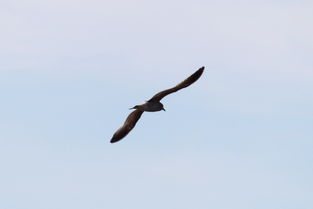Content:
Introduction: Fishing in bridge underpasses has become an increasingly popular pastime among anglers. The unique environment offers a wide variety of fish species and challenges. To help you get started and improve your skills, we have compiled a comprehensive guide with essential tips and techniques, presented in a video format. In this article, we will discuss how to fish in bridge underpasses and provide you with valuable insights that will make your fishing experience more enjoyable and successful.
Selecting the Right Equipment: The first step in mastering bridge underpass fishing is to choose the appropriate equipment. Here are some essential items you will need:
a. Rod and Reel: Opt for a medium-heavy to heavy-duty rod with a fast-action tip. This will help you handle the weight of the fish and maintain control during the fight. A quality reel with a strong drag system is also crucial to prevent line breakage.
b. Line: Use a monofilament line with a breaking strength of at least 12-15 pounds. This will provide enough strength to handle most fish species found in bridge underpasses.
c. Lures and Baits: Depending on the fish species, you can use a variety of lures and baits, such as spinners, jigs, crankbaits, or live bait. Experiment with different presentations to see what works best in your chosen location.
Finding the Perfect Spot: Bridge underpasses can be vast, so it's essential to identify the best spots for fishing. Here are some tips to help you find the perfect spot:
a. Look for areas with strong currents, as these tend to attract fish. These spots are often located near the mouth of the underpass or in the middle of the waterway.
b. Pay attention to submerged structures, such as rocks, logs, or debris. These can provide excellent holding spots for fish.
c. Keep an eye out for areas with different depths, as fish often move between shallow and deep water depending on the season and weather conditions.
Mastering the Techniques: Once you have found the perfect spot, it's time to apply the following techniques to improve your chances of catching fish:
a. Cast Technique: Practice a steady and accurate cast to ensure your lure reaches the desired location. Pay attention to the wind and current, as they can affect your cast.
b. Retrieval Speed: Adjust your retrieval speed based on the type of lure and the behavior of the fish. A slower retrieve can be more effective in certain situations, while a faster retrieve can trigger strikes from more active fish.
c. Presenting Your Lure: Vary your lure presentation to mimic the natural movement of fish. This can include twitches, pauses, and erratic movements. Experiment with different techniques to see what works best.
Baiting and Chumming: When fishing in bridge underpasses, it's often beneficial to use bait or chum to attract fish. Here are some tips:

a. Live Bait: Use live bait, such as worms, minnows, or leeches, to attract fish. Ensure the bait is fresh and well-cared for to increase your chances of success.
b. Artificial Chum: If you prefer not to use live bait, you can use artificial chum, such as corn or bread, to attract fish. Be mindful of local regulations regarding chumming and its impact on the environment.
Safety and Etiquette: When fishing in bridge underpasses, it's crucial to prioritize safety and adhere to proper fishing etiquette:
a. Wear appropriate attire, including non-slip shoes and a hat to protect yourself from the sun.
b. Always be aware of your surroundings, especially when casting or retrieving your lure.
c. Follow local fishing regulations and respect private property.
Conclusion: Fishing in bridge underpasses can be a rewarding and exciting experience if you master the right techniques and tips. By selecting the appropriate equipment, finding the perfect spot, and applying effective fishing techniques, you can increase your chances of success. Remember to prioritize safety and respect the environment while enjoying your fishing adventure. Happy fishing!












